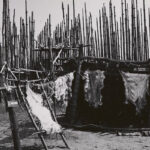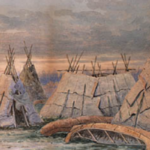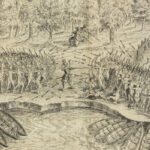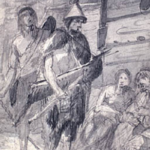The Indigenous Nations and First Nations Bands of Alberta: A Detailed Historical and Cultural Exploration
Alberta’s Indigenous Nations and First Nations bands offer a rich and diverse history that continues to shape the cultural and social landscape of the province. Spanning thousands of years, their histories reveal complex societies deeply connected to the land, resilient in the face of immense challenges, and continually evolving through engagement with European settlers and modern governance. This article provides a detailed exploration of the Indigenous peoples of Alberta, focusing on their pre-European contact lifestyles, social structures, political systems, religious practices, food sources, and interactions with European colonists.
Pre-European Contact: A Rich and Adaptive Way of Life
Long before European contact, the Indigenous peoples of Alberta developed intricate systems for survival and thriving in a diverse and often harsh environment. These societies included the Blackfoot Confederacy (comprising the Siksiká, Piikáni, and Káínaa Nations), the Cree (Plains and Woodland Cree), the Dene (Chipewyan), the Nakoda Sioux, and the Métis. Each nation adapted to its specific environment, from the rolling prairies to the boreal forests and rugged mountain landscapes.
Subsistence Strategies
The bison, an iconic symbol of the Plains, was a cornerstone of life for the Blackfoot and Plains Cree. The Blackfoot Confederacy, in particular, excelled at large-scale bison hunts, using natural features like cliffs for buffalo jumps. The Head-Smashed-In Buffalo Jump, now a UNESCO World Heritage Site, is a testament to their ingenuity. Archaeological evidence suggests that these hunts required precise planning, cooperation, and knowledge of animal behaviour (Brink, 2008).
In the northern forests, the Dene and Woodland Cree relied on moose, caribou, and fish, supplementing their diets with berries and edible plants. Snowshoes and sleds were essential tools for mobility in the winter months, while canoes facilitated summer travel and trade. Historian R. Muckle notes that “seasonal cycles defined every aspect of life, from food gathering to spiritual practices” (Muckle, 2011).
Social Structures and Slavery
Indigenous societies in Alberta were structured around kinship systems and community cooperation. Bands were typically composed of extended families, with leadership often determined through a combination of hereditary roles and consensus. The Blackfoot had a highly organized political system, with chiefs and warrior societies playing central roles in governance and defense.
Among some northern nations, such as the Dene, captives taken during intertribal conflicts were sometimes incorporated into the community as slaves. Unlike the chattel slavery practiced in other parts of the world, this system often allowed for eventual assimilation of captives into the community (Thornton, 1998). The role of slavery in Indigenous societies highlights the complexity and diversity of their social systems.
Politics and Warfare
Pre-contact political systems were decentralized yet highly effective. Leaders were chosen based on their ability to guide the community through hunting, trade, or conflict. The Blackfoot Confederacy was renowned for its strategic alliances and military prowess. Their dominance over the southern plains was maintained through a combination of diplomacy and warfare, often involving raids on rival groups for resources or to assert territorial boundaries.
The Cree and Nakoda Sioux similarly alternated between alliances and conflicts with their neighbours. For example, Cree expansion into the plains brought them into direct competition with the Blackfoot. Dene groups in the north, meanwhile, engaged in both cooperation and rivalry with neighbouring nations, often influenced by the fur trade (Kristensen & Davis, 2015).
Spirituality and Religion
Indigenous spirituality was deeply interwoven with daily life and the natural world. The Blackfoot’s Sun Dance was one of the most significant ceremonies, symbolizing renewal and community solidarity. This annual gathering involved fasting, dancing, and ritual sacrifice, reflecting their connection to the sun and the cycles of life.
The Cree and Dene also practiced ceremonies like the sweat lodge and vision quests, seeking purification, guidance, and a deeper connection to the spiritual realm. Origin stories were central to Indigenous cosmologies, often emphasizing the sacredness of the land and its creatures. For example, the Blackfoot origin story of Náápi (Old Man) explains the creation of the world and imparts lessons about respect and balance (Brink, 2008).
Food Sources and Trade Networks
The diverse environments of Alberta provided abundant resources for Indigenous peoples. The Blackfoot relied heavily on the bison, using nearly every part of the animal for food, tools, and clothing. Pemmican, a mixture of dried bison meat, fat, and berries, became a staple food that sustained them through long winters and was a valuable trade commodity.
Northern groups, such as the Dene and Woodland Cree, harvested fish, hunted large game, and gathered berries and roots. Their subsistence strategies were complemented by extensive trade networks. According to historian K. Coates, these networks not only facilitated the exchange of goods but also cultural interactions, laying the groundwork for later relations with European traders (Coates, 1985).
European Contact and Its Impact
European contact began in earnest during the late 18th century with the establishment of fur trading posts by the Hudson’s Bay Company and the North West Company. These posts became hubs of interaction where Indigenous knowledge of the land proved invaluable. Indigenous trappers supplied furs, while European goods like metal tools, firearms, and cloth transformed traditional practices.
However, the introduction of European diseases such as smallpox devastated Indigenous populations, leading to demographic collapses and significant disruptions to social structures. Missionaries brought Christianity, often clashing with traditional beliefs, though many Indigenous peoples blended Christian teachings with their own spiritual practices (Muckle, 2011).
Modern Developments and Resilience
Today, Alberta is home to 48 First Nations bands, including members of Treaty 6, Treaty 7, and Treaty 8. Organizations such as the Confederacy of Treaty Six Nations and the Métis Nation of Alberta work to protect Indigenous rights, land claims, and cultural heritage.
Efforts in cultural revitalization are central to these communities. Language preservation programs, traditional knowledge workshops, and celebrations of cultural heritage, such as powwows, ensure that Indigenous identities remain vibrant. Environmental stewardship, including the management of resources like the bison and the boreal forest, reflects a commitment to sustainability and respect for ancestral lands.
Conclusion
The Indigenous Nations and First Nations bands of Alberta are custodians of a legacy that stretches back thousands of years. From their sophisticated subsistence strategies and spiritual practices to their adaptability in the face of European contact, they demonstrate resilience and innovation. As historian J.R. Miller aptly notes, “Indigenous resilience is a testament to their capacity to adapt without surrendering their cultural essence.” The ongoing efforts to reclaim and celebrate Indigenous heritage ensure that their stories and contributions will continue to shape Alberta’s identity for generations to come.
References
- Brink, J. W. (2008). Imagining Head-Smashed-In: Aboriginal Buffalo Hunting. Athabasca University Press.
- Coates, K. S. (1985). Canada’s Colonies: A History of the Yukon and Northwest Territories. McGill-Queen’s University Press.
- Dempsey, H. A. (1972). Crowfoot: Chief of the Blackfeet. University of Oklahoma Press.
- Kristensen, T. J., & Davis, R. (2015). Indigenous Adaptations and Resilience in the Subarctic. Routledge.
- Muckle, R. J. (2011). The First Nations of British Columbia: An Anthropological Overview. UBC Press.
- Thornton, R. (1998). Studying Native America: Problems and Prospects. University of Wisconsin Press.



